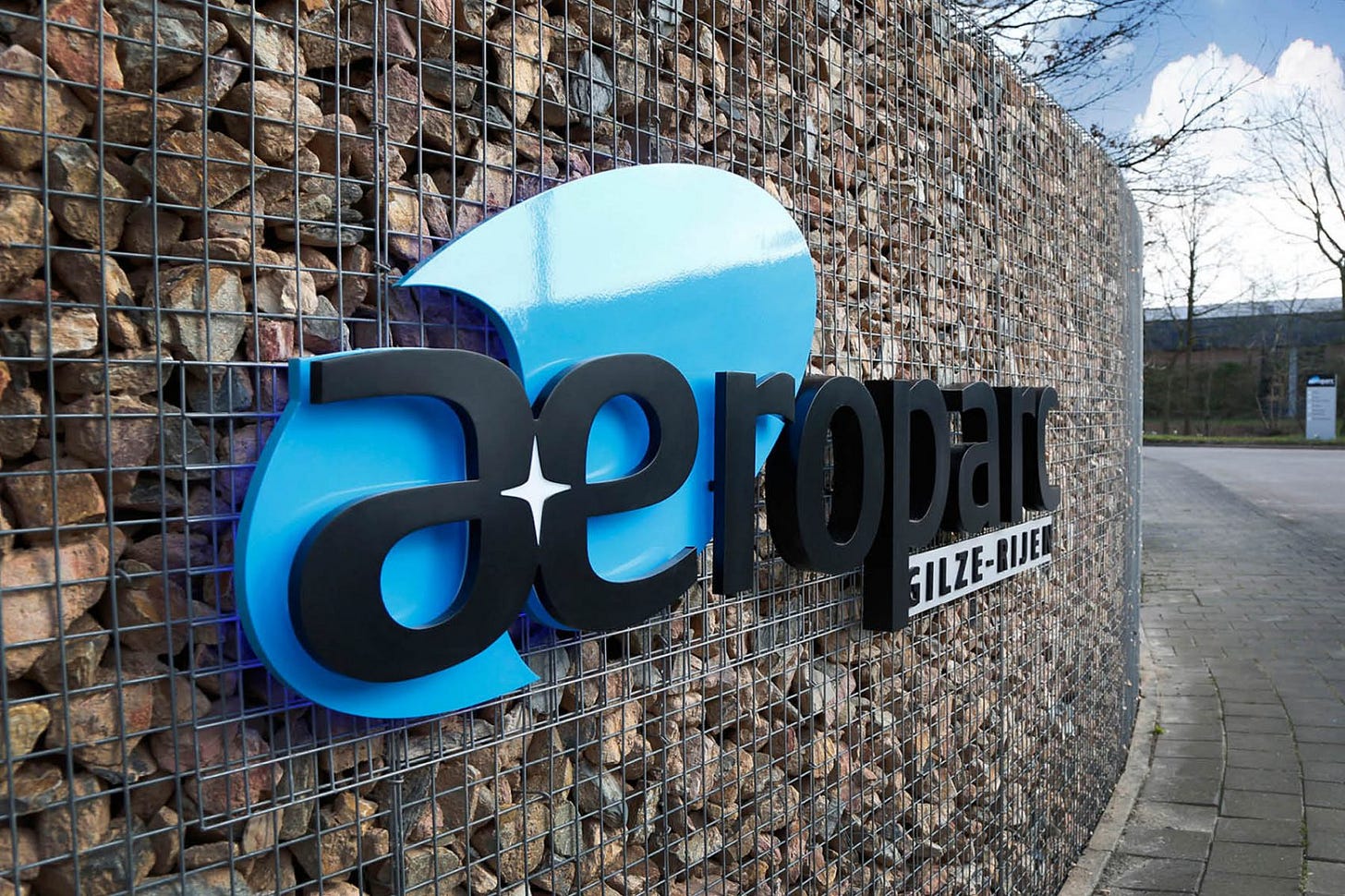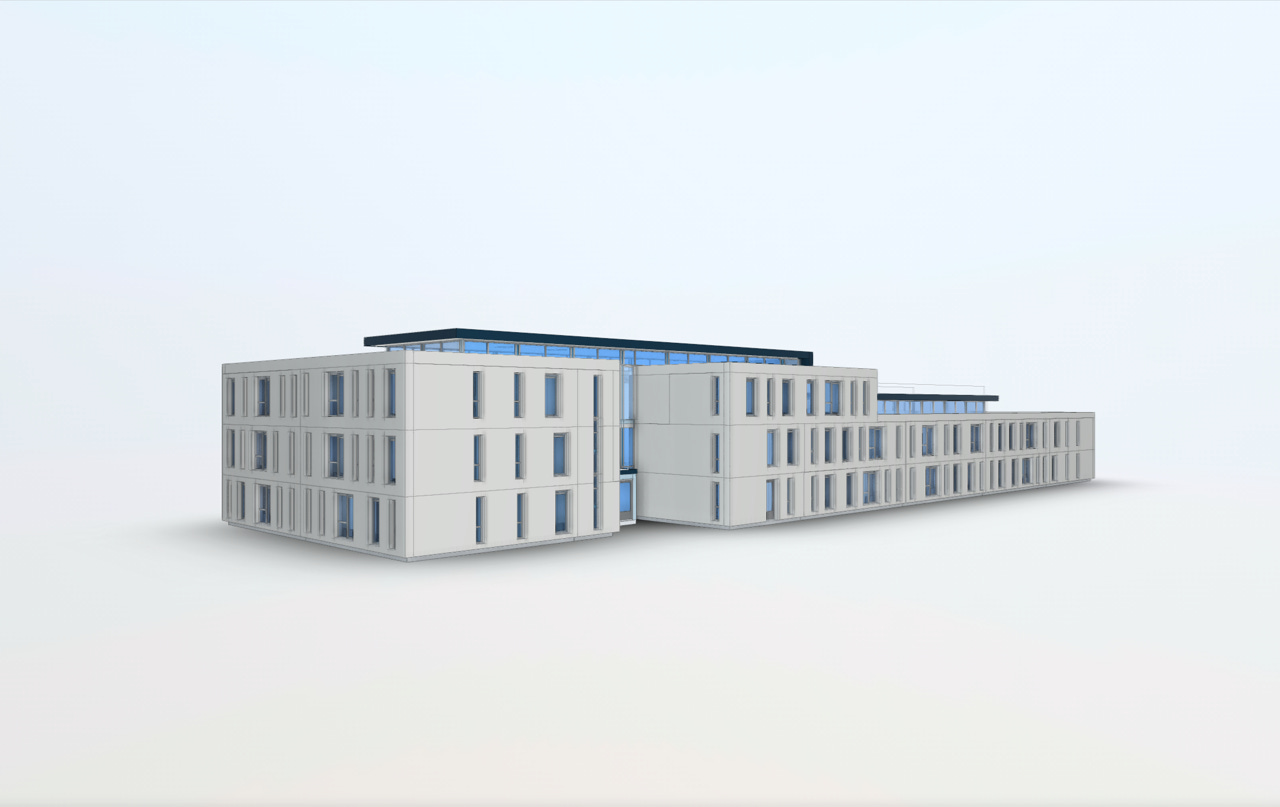Today, I made my way to COENCAD, located in Rijen. On my route, I passed the local air base and noticed a group of 'spotters' watching various helicopters, including the Apache, as the military conducted exercises. I was aware of the air base's existence, but I hadn’t anticipated driving so close to it today. It was delightful to see people enjoying their hobby early in the morning.
However, my main destination was COENCAD, situated on the 'Aeroparc' site. It’s remarkable to think that less than 15 years ago, this entire business park was occupied by the telecom giant Ericsson. At that time, over 2,200 employees were busy developing and producing phones and phone exchanges for the Dutch market. Nowadays, around 200 companies are based in the various offices, with Ericsson owning only a few. This really highlights how much can change in just 15 years.
Meeting Thijs at COENCAD
I had the pleasure of speaking with Thijs, co-owner of COENCAD and the son of founder Coert van den Broek. Thijs shared that the company started 21 years ago as a one-man operation and remained that way for about 12 years. Ten years ago, he joined the company, and since then, they have grown from 3 to 30 employees. He focuses on the sales side of the business, while his father is the technical expert and software developer. Interestingly, he had always said he wouldn’t work with his father, but after landing a significant client in his first three months, he found the experience so rewarding that he decided to stay.
Working with family has its advantages and disadvantages. Personal and work life sometimes overlap, which can be challenging. However, the significant benefit is that they are always on the same page. When it comes to vision and strategy, there is never any disagreement, and they can trust each other completely.
What Does COENCAD Do?
COENCAD digitises and visualises real estate data for housing corporations, creating a digital twin—a digital copy of existing housing assets. This can be in the form of a 3D or 2D model, from which they extract valuable data to enhance the corporation's operations. For instance, they can determine the square metres of living room and kitchen space. Social housing and private rentals are linked to rental points that help establish rent prices. This means the corporation can quickly see that a living room is 15 square metres, which corresponds to one point, along with details like the length of the kitchen worktop or the number of toilets.
Additionally, façade data can be extracted for maintenance budgeting, such as knowing how many metres of wooden window frames need maintenance every seven years.
By providing more reliable data, they empower housing corporations to make better decisions. With the need for sustainability in the sector, understanding property details is crucial.
The Shift to Self-Management
Thijs and Coert have never really seen themselves as traditional bosses. For a long time, they operated without a clear management structure, which led to confusion within the organisation. Many companies are hierarchical, expecting a manager to dictate what needs to be done, but that was not their approach. This created an uncomfortable situation where everyone was somewhat unsure of their roles.
After reading the book about Semco, they realised that it didn’t quite fit their style, as it suggested that owners could step back. Both Thijs and his father enjoy working and want to remain actively involved. Eventually, Thijs had a conversation with someone about holacracy, and the idea of "tension as fuel" struck him as brilliant. This led them to experiment with holacracy in their organisation.
The beauty of holacracy is that everything is structured and documented. There are defined roles with clear responsibilities, which helps everyone know who to approach for specific issues. Previously, roles were vague, leading to confusion about responsibilities. Thijs and Coert found themselves overwhelmed with tasks, which became unsustainable as the company was growing.
Instead of hiring managers, they sought a model that allowed colleagues to take on more responsibility and work together towards a common goal. This approach was essential, as the team members shared the same values and preferred working with a degree of freedom. Holacracy provided a fitting solution for their needs.
For more insights on holacracy, feel free to check out my previous blog posts on the subject.
Salary Approach
At COENCAD, they embrace a different method for determining salary progression. Instead of relying on a traditional collective labour agreement, they have developed their own salary model based on a point system.
Employees can earn points in various ways, such as demonstrating maturity in their roles, taking on extra responsibilities, and fulfilling multiple roles within the organisation. As individuals accumulate points, their salaries increase accordingly.
A crucial part of the salary review process involves gathering feedback from three colleagues. This practice has been in place even before they adopted holacracy, highlighting their commitment to peer evaluation. Interestingly, they often initiate salary increases before employees even request them. They recognise when someone has taken on more responsibility or earned additional points, and adjust their pay to reflect this.
Their system is designed to ensure that those who carry the most responsibility—rather than those who are the most vocal—receive the highest salaries. While individual salaries are not yet fully transparent, they are committed to more openness regarding their salary scale and point system.
Looking ahead, they aspire to make all salaries visible to everyone, allow employees to manage their own salary budgets, and enable peer feedback to directly influence salary decisions.
Hiring and Contract Extensions
At COENCAD, contract extensions and hiring someone new are handled differently than in traditional companies, where decisions often rest solely with a manager and someone from HR. Instead, COENCAD adopts a collaborative approach:
Peer Involvement: Three colleagues who work closely with the employee are invited to participate in the decision.
Collective Decision: These team members, along with someone in a 'contract extension or hiring role', discuss whether to extend a contract or hire someone new.
This method offers several benefits:
It provides a well-rounded view of the employee's performance.
It empowers employees by involving them in key decisions.
It fosters a culture of trust and shared responsibility.
Thijs has embraced this decentralised approach to hiring and contract extensions. He no longer participates in job interviews, except for roles directly related to his own roles. This hands-off approach extends to the point where he often doesn't meet new employees until their first day at work.
While some might find this detachment unusual for a business owner, he finds it liberating. It demonstrates that he doesn't need to have control over every aspect of the business and allows him to focus on areas where he excels, such as sales and marketing. By delegating these responsibilities, he can ensure that both the company and he operate at their best.
Transforming Social Housing
COENCAD is dedicated to improving the social housing sector in the Netherlands through better data solutions, helping housing associations make smarter decisions and work more efficiently. Their approach focuses on:
Long-term Partnerships
With a high customer satisfaction rating, they prioritise building lasting relationships with clients rather than chasing quick profits and they’ve earned a reputation as a reliable and service-oriented organisation.
Social Impact
By helping housing associations operate better, they contribute positively to society. Their purpose, which guides all their efforts, is summed up as:
"Better data, stronger social housing"
Their mission goes beyond just making money, aiming to improve the housing sector through better data and aligning with the values of their clients. This approach resonates well with housing association employees, who often have a strong social conscience.
Commitment to the Sector
Convinced that this approach to work enhances job satisfaction, the focus is not solely on commercial interests but on a higher purpose. This means they won't make decisions that might negatively impact the sector, even if it could be commercially beneficial.
Future Plans
Embracing Freedom, creativity and Transparency
The company is setting its sights on a more inclusive and transparent future. Whilst financial information is already shared multiple times a year, there's a strong desire to push the boundaries of openness even further. This commitment to transparency is just the beginning of a broader vision.
The ultimate goal is to create an environment where every colleague can work freely and unleash their creativity without the constraints of rigid power structures or hierarchies. This vision is rooted in the belief that true freedom fosters a deeper sense of responsibility and connection to the organisation. Shared ownership is seen as one of several potential solutions to reward colleagues and align interests, rather than an end in itself.
Steps are already being taken to make this vision a reality; for instance, one colleague who wasn't initially an owner has recently become a co-owner, marking the first milestone on this journey. However, it's important to note that universal co-ownership is not the definitive aim. Instead, it's viewed as a potential outcome of the company's broader objectives.
This transition is recognised as a gradual process that will unfold over time. The organisation acknowledges that building a system that truly empowers employees requires careful planning and execution. Key steps include establishing multiple owners where appropriate, further enhancing financial transparency across the board, and exploring various ways to reward and engage colleagues.
Next time
Next time, I will share insights from my visit to Voys. They provide innovative cloud telephony solutions for businesses, focusing on integrating advanced communication technologies to support informed decision-making in customer service and team collaboration. They are also one of the first organisations in the Netherlands that started working with holacracy.
Keep reading, because there are many more fascinating topics and insights to discover in the articles ahead! I'd love you to come along with me on this exciting trip of learning new things. Sign up to my blog right away to embark on this adventure together.






Another great article, your introduction of "It’s remarkable to think that less than 15 years ago, this entire business park was occupied by the telecom giant Ericsson. At that time, over 2,200 employees were busy developing and producing phones and phone exchanges for the Dutch market. Nowadays, around 200 companies are based in the various offices, with Ericsson owning only a few. This really highlights how much can change in just 15 years." was a powerful highlight that being successful today is not guarantee or being successful tomorrow. Those companies who carry on as they have always done regardless are not going to carry on. The Aeroparc site is testament to that